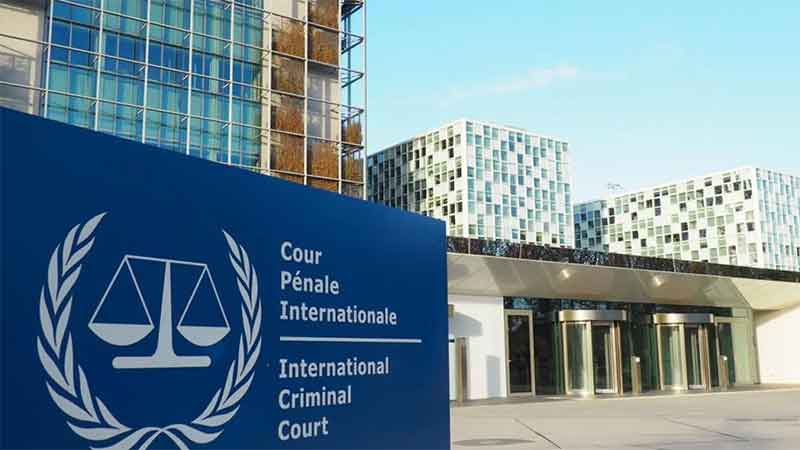
One aspect ignored regarding the Shaheen Bagh protests on the citizenship issue in Delhi is the issue of denial of public space to people, increasing restraints on acces to existing such spaces.Civil liberties groups urban planners should seriously study, take up these issues.The Supreme court raised questions on February 10 about protests on roads in Delhi . It would be pertinent to point to an assertion made by poet Mirza Ghalib in the same city . What he said in translation was `neither temple nor mosque, neither door nor threshold, it is the public road we are are sitting on, why should any rival dislodge us ?’
The streets have in the past always been venues for voicing of people’s protests and gatherings. But over the years cars have been given priority over people. A disproportionate public space is occupied by motor cars.
Even in Shaheen Bagh there is a big parking space for car parking outside Shaheen Bagh Metro station. There are 95 such stations providing very low priced car parking facilities. Plus there is millions of sq ft of space for car parking elsewhere in the capital and other centres.
So there is space for idle cars but not for human beings to voice their grievance on curbs on democracy and freedom.
. Unfortunately many of us are motorists, obsessed with car use and we do not see that unbridled automobilisation has completely destroyed our streets, taken them over, destroyed our urban and social fabric and we seriously need to reclaim streets.
There is a widespread movement against motorization in the West but many of our liberals still are fascinated by the motor car.
Even New York’s former traffic commissioner Jannette Sadik Khan in her book Street Fight sees the great role streets have played in the struggle for democracy. Public spaces and streets, Tiananmen Square, Bastille, Trafalgar Square, Tahrir, Taksim are spaces where life and history happen, she wrote.
She has done a lot to reduce space for cars in New York and make streets more friendly to pedestrians and bicyclists. It is absurdly cheap to redesign streets, she says.
Donald Shoup, top expert on car parking, says the money spent on free parking in the U.S. would exceed the defence and medicare budgets and more space is given to parking than to housing humans. In India too car dominance is seriously impeding space for ordinary human beings as the rulers want to give primacy to cars over people. So increasingly police make it difficult to take out morchas or hold public meetings.
In the British days the bazaar or the mela was the space where people congregated and this was seen as a threat by the British.
That is why the British wanted to control this public space. And the modern state too wants to impose order on the street because capitalism too requires disciplined, regulated public spaces. After independence our rules continue to view with suspicion people on the street.
Partha chaterjee, scholar, has expressed concern over frequent bans on wall writing, posters, rallies, processions. Behind the zeal to cleanse and sanitise public areana, there is a secret desire to rid the space of citizenship of all nose, smell and gaudiness of a publicly mobilized plebian culture that is seen both as an impediment and embarrassment to an India seeking to become a world power.
They want pure governance, unsullied by politics, no questions can be asked, need to be answered.
Most of Mahatma Gandhi’s struggles in South Africa and India were conducted peacefully on the streets. The date September 11 has far more significance than the attack on the World Centre and the Pentagon. On September 11, 1905 Mahatma Gandhi launched his peaceful satyagraha in South Africa.
It was an absolutely unique method of non-violent protest, resisting violence with non-violence. Among the participants in the peaceful struggle, braving violence from the brutal apartheid regime in South Africa, were Muslim businesspersons, Parsis, Pathans, hawkers, mining workers and Europeans.
The satyagraha was against the Black Act which required every Indian man, woman or child of eight years or upwards entitled to reside in the Tranvaal must register his or her name and take out a certificate of registration.
The registrar was to note down important marks of identification and take his finger and thumb impression. Every Indian who failed to apply for registration was to forfeit the right to residence. Failure to apply also would be held as an offence in law for which the defaulter could be fined, sent to prison or even deported within the discretion of the court.
Even a person walking on public thoroughfares could be required to produce the certificate Police officers could enter Indian homes to check the certificates.
Among the speakers at the September 11 meeting was Ahmad Muhammad Kachhalia, whom Mahatma Gandhi, considered the hero of the whole struggle. Gandhiji wrote that he had never encountered a man who could surpass Kachhalia in courage and steadfastness.
He was a strict Muslim but looked upon both Hindus and Muslims with an equal eye. Among the large number of people who courted arrest were hawkers who had always suffered under the license system. Every hawker, black or white, had to carry a licence and show it to the police on demand. Nearly every day some policeman would ask them to show the licence and harass them. That practice continues in today in India in some form or the other . Among those who suffered the longest term of imprisonment was Sorabji Shapurji Adjania. Gandhiji described him as a man with a heart of pure gold.
There were many heroic figures in the struggle. Gandhiji mentions Bai Fatma Mehtab of Durban who refused to give her finger impressions . She and her mother were sent to prison for three months. . One of the highlights of the satyagraha was a peaceful protest march.
.
In the centenary year of the satyagraha in South Africa, students of Pune’s historic Fergusson college were arrested for squatting outside the college gate and demanding the withdrawal of expulsion of three students. The students had been punished for protesting against the college’s burning of certain books in the college premises.
The students were arrested and slapped with charges punishable with jail for more than a year. On Independence day, some volunteers of Yuvak Kranti Dal, a youth organization, went to a sessions judge and asked him how students offering satyagraha could be jailed by the police. The court promptly released them. Dr Kumar Saptarshi, an old hand at satyagrahas and student leader, said if youths protest peacefully and the police stop being mean, the movement would attract bright students as in old days. . These days good students are afraid of joining protest movement as police simply arrest them without sending them to trial and giving them a chance to acquit themselves. This creates one big problem. The student’s name remains on police record and this affects his or her future career. Thus the police cynically nip protests in the bud.
The tradition of fighting injustice on streets is more than a century-old in the United States.In the early 1800s the courts generally regarded unions and strikes as criminal conspiracies. By the 1870s the labour movement began to focus on freedom of speech which is viewed as a necessary component of the right to organize. Peaceful labour demonstrations were regularly and often violently broken up by the police.
Beginning in 1897 Emma Goldman and other anarchists toured the country speaking on a range of topics from politics to literature and the arts. They were regularly prohibited from speaking on streets or in public or private halls, or limited to certain topics.
The Industrial Workers of the World (IWW) put up a spirited fight between 1909 to 1915 to protest denial of right to speak on public streets, sidewalks and parks.The first major confrontation with the police took place in 1909 when the workers were speaking on the streets and distributing literature to protest employment agencies that charged unemployed workers a fee for non-existent jobs. Several workers were arrested.
The Industrial Worker paper noted that while a demonstration of working men in the interest of the right of freedom of speech was judged a riot by the courts, violence and terrorism by the capitalists and their tools is called law and order.
In 1917 participants in the women’s suffrage movement, seeking political rights for women, protested before the White House and were convicted of the offence of obstructing traffic which they had not done. Many women were jailed where they were mistreated. They staged hunger strikes in protest.
In 1894 reverend William Davis, a long-time opponent of slavery and racism, was arrested for preaching at the Boston Common, a public park. In another case the Supreme court upheld the right to speak on streets. `Wherever the title of streets and park may rest, they have immemorially been held in trust for the use of the public and have been used for purposes of assembly, communicating thoughts between citizens and discussing public questions. Such use of the streets and public places has from ancient times been a part of the privilege, immunities, rights and liberties of citizens.
The streets belong to the people ………is a popular street-fighting chant.
(Vidyadhar Date is a senior journalist and author of a book demanding a more democratic street environment).
SIGN UP FOR COUNTERCURRENTS DAILY NEWS LETTER








































